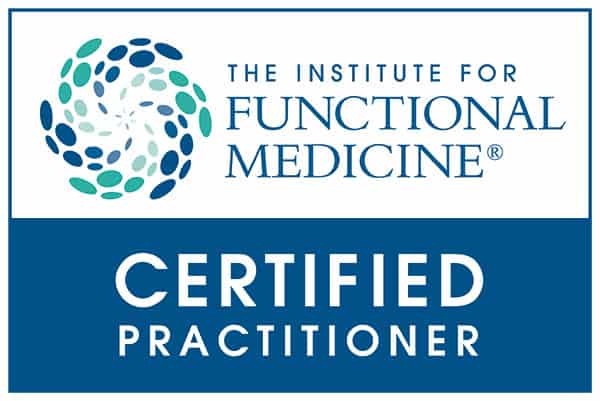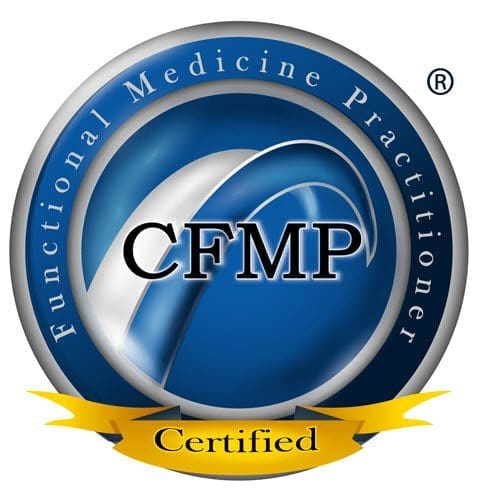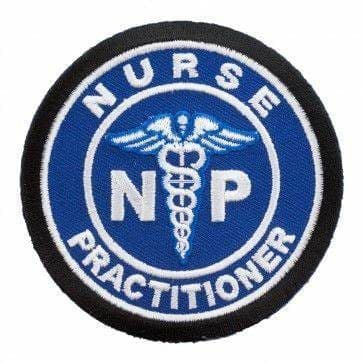
by Dr Alex Jimenez DC, APRN, FNP-BC, CFMP, IFMCP | Fitness, Health, Wellness
Pilates is known for building strength in your core—but that doesn’t mean it only works the abs. This popular workout can also lengthen your limbs and sculpt lean muscle all over. Take it from Julie Erickson, founder of the Endurance Pilates and Yoga studio in Boston. A certified Pilates instructor who’s trained pro athletes and dancers, Julie knows exactly how to use this workout to target each part of the body so you stay strong, no matter what type of activity you’re into (football, ballet, you name it!). In this video, Julie demonstrates six Pilates exercises that are specifically intended to help tone you from the waist up. Don’t have time to watch? Here are the six sculpting moves she shows us:
Shoulder opener: On a mat, rest on your knees holding a weight (or water bottle!) in each hand. Raise your arms out slightly behind the body, keeping them straight and pulsing your hands in towards your midsection behind the back for 45 seconds.
RELATED: This 10-Minute Ab-Sculpting Pilates Workout Targets Your Inner Core
Shave: On a mat, rest on your knees with your arms raised straight above your head. Create a diamond shape with hands above the head. With hands still in a diamond shape, bend at the elbows to lower the arms behind the head, then extend straight again. Continue this bend-and-extend movement for 45 seconds.
Arms wide: Standing tall with your back against a wall, slowly raise arms out to your sides until they create a wide “V” shape above your head. Return them down to the starting position and repeat this movement for 45 seconds.
RELATED: Get Sculpted Shoulders and Toned Arms with Emily Skye’s Upper-Body Workout
Goal: Standing tall with your back against a wall, raise your arms to a goal post position with each elbow creating a 90-degree angle at shoulder height. Keep arms raised and slowly shrug your shoulders up and down for 45 seconds.
Chest expansion: On a mat, rest on your knees with a weight in each hand. Slowly raise your arms straight out to chest height in front of you, then lower them back down. Turn your head to the right, then left, then return to center and repeat this sequence for 45 seconds.
Overhead side stretch: Standing tall, raise your right arm up overhead and lean your torso toward the left to stretch the side body. Return to center and repeat with the left arm raised, leaning your torso to the right to stretch the other side. Continue to switch off stretching to each side for 45 seconds.

by Dr Alex Jimenez DC, APRN, FNP-BC, CFMP, IFMCP | Fitness, Health, Wellness
Taking care of your mind and body can take tons of different forms, from settling in for a scented bubble bath to getting your heart rate sky-high in spin class. It all depends on what works best for you.
But if you ask us, practicing self-care while you stay active is the best of both worlds. That�s just what we�re doing in this eight-minute flow with body-positive yogi and Every Body Yoga author Jessamyn Stanley.
�This sequence is all about getting into your own body, finding your strength within, and remembering that you are self-confident all the time, no matter what obstacle, no matter where you are,� says Jessamyn. Preach.
There�s science to back up yoga�s mind-body benefits as well. The ancient activity comes with a wide range of healthy side effects, from lower stress levels to a stronger core, better sex, and fewer headaches (you know, just to name a few). Not to mention yoga is accessible for pretty much every body, as Jessamyn�s book demonstrates.
RELATED: This Invigorating Yoga Flow is the Best Way to Get Energized
In the video above, she�ll show you how to strengthen and lengthen your body using classic poses like Warrior I, Warrior II, Triangle, and more. You�ll also work on building better balance and eventually take time at the end of the practice to sit still, breathe, and appreciate all the amazing work your body has just allowed you to do.
Nervous because you�re a yoga novice? There�s no need. Jessamyn caters the flow to beginner and advanced yogis alike. Follow the yoga routine in the clip above to practice self-love and exercise at the same time. It�s really a win-win. And if you want to keep the self-love coming post-workout, go ahead and treat yourself to a DIY spa day. Because you deserve it.

by Dr Alex Jimenez DC, APRN, FNP-BC, CFMP, IFMCP | UTEP (Local) RSS
UTEP track and field will be hosting the 2017 Conference USA Outdoor Championships from May 11-14 at Kidd Field.
The Miners women’s team will be looking to win its first outdoor conference title in program history. The women’s team comes into the competition full steam after claiming its third consecutive C-USA indoor title.
The Fastest Kid in El Paso race will be taking place on Saturday, May 13. Kids ages 5-13 are invited to participate in the 100m dash at 3 p.m. at Kidd Field. To sign-up for the race please, contact UTEP Marketing at (915) 747-6065.
Leading the way for the Miners will be sophomore Tobi Amusan. The All-American opened the outdoor season with the second-fastest time in the nation of 12.63 in the 100m hurdles registered at the UTEP Springtime. The hurdler has claimed six first-places finishes this season, including a stellar performance in the 200m that rates her eighth nationally with a time of 22.60.
Lucia Mokrasova will also highlight the Miners kicking off the championships on Thursday with the heptathlon set to start at 2:45 p.m. MTMokrasova enters the meet ranked eighth nationally with 5,671 points registered at Texas Relays.
Highlighting the distance races will be Middle Tennessee Agnes Abu. The senior comes into the championships ranked sixth in the nation in the 800m.
On the men’s side, freshman Emmanuel Korir will be the Miner to watch. The mid-distance runner was named to The Bowerman Watch List after posting the fastest time in the nation of 1:43.73 in the 800m. Korir also ranks third in the nation in the 400m with a time of 44.67.
Tickets can be purchased at ticketmaster.com. A four-day pass can be purchased for $20 or a daily ticket can be purchased for $8 for adults or $4 for kids. Students are able to attend the championship free with their Miner ID.
For additional athletes to watch at the championship, click here. For information about parking, tickets and live results, click here.
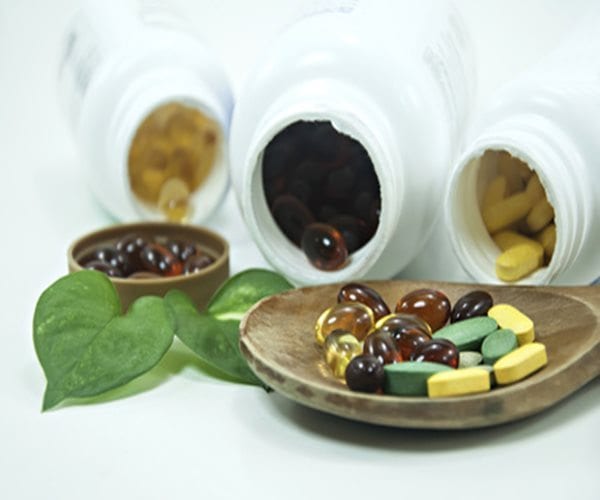
by Dr Alex Jimenez DC, APRN, FNP-BC, CFMP, IFMCP | Herbs, Natural Health, Remedies, Wellness
Many parents of children with debilitating gastrointestinal disorders may be frustrated by the lack of good treatment options and tempted to try herbal remedies at home, but a new study suggests they should proceed with caution.
Researchers examined data from 14 previously published studies with a total of 1,927 children suffering from problems like diarrhea, dehydration, colic, constipation, abdominal pain and irritable bowel syndrome. They didn’t have enough data to combine results from multiple small studies to offer definitive proof that herbal remedies might work for any of these health problems.
But some of the small studies did suggest certain herbal medicines might help ease diarrhea, abdominal pain and colic. And the studies didn’t find serious side effects associated with herbal remedies.
“The lack of conclusive research is unfortunately a general problem in pediatrics, but a special problem in herbal medicine is that for many herbal remedies no licensed and standardized products are available,” said lead study author Dr. Dennis Anheyer of the University of Duisburg-Essen in Germany.
In other words, even if evidence shows an herb may be safe and effective for a specific health problem, that doesn’t necessarily mean that every single version of that herb available for sale would work as well or be free of side effects.
When researchers looked at four studies with a total of 424 participants, they found some evidence suggesting that a variety of herbal remedies might help diarrhea: a plant in the rose family called potentilla erecta, carob bean juice, and an herbal compound preparation with chamomile.
One study with 120 participants also suggests that peppermint oil might help curb the duration, frequency and severity chronic abdominal pain that doesn’t have a clear medical explanation.
And, fennel might help ease colic symptoms in babies according to a review of five small studies of herbal remedies for infant colic.
While it’s possible herbal remedies might be used in addition to traditional medications or to help reduce reliance on drug therapy, parents should still see a doctor before trying out herbal therapies on their own, Anheyer said by email.
Another reason for caution is that even the studies in the current analysis that found herbal remedies effective don’t show how large the effects are, noted Dr. Peter Lucassen, a researcher at Radboud University Medical Center in the Netherlands who wasn’t involved in the study.
These small studies might get results that find herbs are statistically better than no treatment or alternative therapies, but the difference still might not be big enough to have a meaningful clinical impact on patients’ symptoms, Lucassen said by email.
“I would not advocate any of the herbal medicine because the article does not provide any data about how large the effects are,” Lucassen said.
Often, herbal remedies combine a variety of ingredients and use differing amounts of the main ingredients, which may alter how well they work and how safe they are for kids, Lucassen added. They might also contain chemicals not found in prescription medications that have dangerous side effects or a risk of overdose.
And there’s another reason parents shouldn’t try herbal remedies without seeing a doctor.
“Delayed diagnosis might be the result of herbal medications because parents seek help too late because they try the herbs first,” Lucassen said.

by Dr Alex Jimenez DC, APRN, FNP-BC, CFMP, IFMCP | Diets, Fitness
If you’re doing your best to eat lots of fresh fruits and vegetables, the convenience of pre-washed bagged salads may be too hard to resist. The problem is such products can contain contaminants and foreign substances that can make you sick.
That reality was dramatically spotlighted last month when two people ate fresh salad from a bagged lettuce product before discovering the remains of a bat in it. Further complicating things, the unfortunate were treated for rabies as a precaution (although lab tests later showed the bat was not rabid).
Peter Cassell, spokesperson for the Food and Drug Administration (FDA), noted the case was extremely rare and not a reason for a larger public health concern.
“Packaged salads are generally safe to eat right out of the package,” he said. “Most salads are double-washed or triple-washed and dried under managed conditions. Packaged salads are widely sold for consumer’s convenience.”
But he acknowledged such products can contain contaminants, so consumers need to take precautions to be sure they are not consuming anything dangerous or, at least, unappetizing.
“The most common extraneous materials that can be found in produce grown close to the ground include stones, rocks and dirt,” he noted. “One way consumers can identify and remove these materials is to pour the salad out into a bowl and lightly sift it with clean hands or utensils. There is no need to rewash salads that have already been washed before packaging.”
It’s not the first time that consumers have encountered problems with pre-washed salads, veggies, and fruit. Last year, four people died and 33 became ill from listeria in packaged salads.
Listeria found in food processing plants is not uncommon, but it isn’t always toxic. Dole salads, the problem in the case of listeria, closed the offending plant, issued a recall, and followed FDA requirements to sanitize its processing systems.
The salad with the dead bat was in Organic Marketside Spring Mix, produced by Fresh Express. It was only distributed at Walmart stores in the Southeastern United States.
The odds of finding a bat or dangerous pathogen in your salad are quite rare, experts say. According to Cassell, people can generally trust that pre-washed salads are handled correctly and present little to no risk to the consumer.
But health specialists say a handful of safe food-handling practices, especially for produce, are a good idea for consumers to follow. Among them:
- Wash your hands thoroughly before starting to prepare food.
- Sort through bagged or boxed greens and/or vegetables carefully.
- Rinse thoroughly and inspect the contents of bagged greens, even if they are already pre-washed.
- Do not use special “veggie soaps.” They don’t do much and remain on the food that you eat.
- Look for “best used by” dates and buy foods accordingly. If food is really fresh it will be better for you.
- Cut away damaged or bruised areas on fruits and vegetables. Throw it away if it looks rotten.
- Even if you plan to peel the produce, it is a good idea to wash it.
- Scrub things like melons or cucumbers with a clean produce brush.
- Use a paper towel to dry produce because it can help to get rid of bacteria.
- When you purchase and store your produce, bag it and store it separately from other foods like meat, seafood, and poultry.
- Refrigerate any produce that is pre-cut or peeled.
- Additional advice from the FDA:
- Wash hands and surfaces often when preparing food.
- Wash your cutting boards, dishes, counters frequently to avoid cross contamination with bacteria and other microbes.
- If you use cloth dishtowels to wipe counters clean, make sure you wash them in hot water. Consider using paper towels instead of cloth towels.
Most of us face some risk from foods — even fresh foods — that aren’t properly washed or cleaned, or that may have been contaminated by other foods like fresh meat.
About 48 million cases of foodborne illness occur each year, with one in six Americans becoming ill from some sort of food contamination. Illness usually starts within days after eating contaminated food, and can include vomiting, diarrhea, abdominal pain, fever, and headache.
Most people recover from food poisoning, according to the FDA. But pregnant women, young children, the elderly, and those with weakened immune systems face a greater risk of complications.
The bottom line: Take a look at that pre-washed salad, toss it with some utensils, and be wary, but be aware that it is probably safe, according to Cassell.
For more information about recalls, or to file a complaint about purchased food, visit the FDA Website.

by Dr Alex Jimenez DC, APRN, FNP-BC, CFMP, IFMCP | Anti Aging
Could wine have a protective effect on the brain? A team of researchers at the Institute of Food Science Research in Madrid, Spain, have studied the process by which compounds in red wine have an anti-aging effect on the brain.
When consumed in moderation, notably as part of a Mediterranean diet, red wine, which contains polyphenol antioxidants, can be beneficial in delaying the onset of cognitive impairments in aging and neurodegenerative diseases like Parkinson’s and Alzheimer’s disease, researchers report.
Resveratrol — a substance found in red wine and chocolate — could help prevent age-related memory loss.
To investigate the molecular mechanisms behind the neuroprotective actions of wine, researchers in Spain studied certain compounds that are left behind after the wine has passed through the gut — wine-derived human gut metabolites. These are found in the urine and feces of people who drink wine on a regular and moderate basis.
To study the effects of these metabolites on the brain, the compounds were added to human cells under stress conditions, similar to the initial stages of certain neurodegenerative disorders.
According to the results, published in Frontiers in Nutrition, the wine metabolites protected the cells from dying due to the stress conditions.
The scientists explain that the exact composition of wine metabolites influences the neuroprotective effect. This composition, in turn, depends on the composition of each individual’s gut microbiota. In other words, wine is broken down into different metabolites depending on the gut flora of each individual.
“[This] underpins the idea that humans benefit from food in different ways,” explains Dr. Esteban-Fernández from the Institute of Food Science Research in Madrid. “This individual difference is a factor not to be neglected to understand the health effects of certain foods. We are now in need to advance our understanding of the effect of diet in the promotion of normal brain function.”
The study concludes that diet can be considered an important factor in health maintenance and disease prevention.
Antioxidant nutrients are mainly found in brightly colored fruit and vegetables such as carrots, apricots, sweet potato, bell peppers and green leafy vegetables (cabbage, spinach, peas, avocado, etc.)
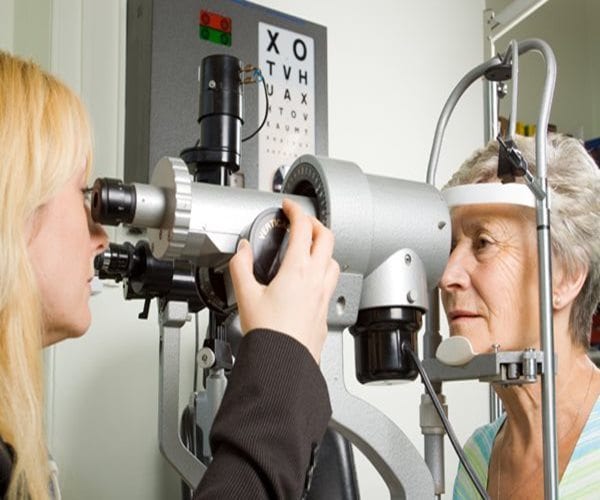
by Dr Alex Jimenez DC, APRN, FNP-BC, CFMP, IFMCP | Anti Aging
Primary care optometrists and ophthalmologists may sometimes fail to detect age-related macular degeneration, the most common cause of vision impairment in the elderly, a recent U.S. study suggests.
Researchers examined data on a total of 1,288 eyes from 644 older adults who got what’s known as a dilated eye exam, when clinicians widen the pupils with eye drops to let in more light and get a better look at the retina in back of the eyeball.
Based on these exams, none of the participants were diagnosed with age-related macular degeneration by primary care optometrists and ophthalmologists. But when retina specialists took another look, they diagnosed the eye disorder in 25 percent of cases.
“To our knowledge, this is the first study to address the extent to which age-related macular degeneration (AMD) is under-diagnosed by primary eye providers in the U.S.,” said lead study author Dr. David Neely, a researcher at Callahan Eye Hospital and the University of Alabama at Birmingham.
“As treatments for the earliest stages of AMD are developed in the coming years, correct identification of AMD in primary eye care will be critical for routing patients to treatment as soon as possible so that the disease can be treated in its earliest phases and central vision loss avoided,” Neely said by email.
About 14 million Americans have age-related macular degeneration, and as the baby boomer population ages, the ranks of patients with this disorder are expected to swell, the researchers note in JAMA Ophthalmology.
It happens when a part of the retina called the macula gets thinner with age. Over time, people with the condition can lose what’s known as central vision, or the ability to see things in detail when facing them head on. They can become unable to read books or see the road well enough to drive a car, but they may retain some peripheral vision.
There’s no cure, but there are some medications and laser procedures on the eye that can sometimes slow the progression of the disease and help avoid extensive vision loss. Eating plenty of leafy greens and avoiding cigarettes may help prevent the condition from developing.
Patients in the current study were 69 years old on average. They were seen by one of 31 primary eye care providers in Birmingham, Alabama, between 2009 and 2011.
They were more likely to have undiagnosed age-related macular degeneration if they were older, male or had less than a high school education.
One limitation of the study is that results from practices in one region might not necessarily reflect how accurately age-related macular degeneration would be diagnosed elsewhere, the authors note.
There’s also wide variation in severity with this condition, said Dr. David Parke II, chief executive officer of the American Academy of Ophthalmology.
“It’s a little like a person saying `I have high blood pressure,’” Parke, who wasn’t involved in the study, said by email. “It can be just borderline high and difficult to detect or it can be dangerously high leading to a high risk of stroke or heart attack.”
It’s not surprising that good quality, high magnification images of the macula interpreted by a trained ophthalmologist retina specialist catch more subtle changes in the eye, Parke added. But it’s also more expensive than traditional dilated eye exams done by primary eye care providers and won’t necessarily catch many additional cases of AMD in people who don’t have symptoms, he said.
As the condition worsens, some previous research suggests that nutritional supplements with ingredients including zinc, copper, and vitamins C and E may help minimize vision loss.
“For many patients with more severe AMD the use of nutritional supplements can reduce the subsequent rate of worsening of AMD and vision loss,” said Dr. Paul Lee, director of the W.K. Kellogg Eye Center at the University of Michigan in Ann Arbor.
“One piece of good news is that AMD is generally something that progresses over years, so that if detected on the next visit, there is still the opportunity to have the therapy started then,” Lee, who wasn’t involved in the study, said by email.






